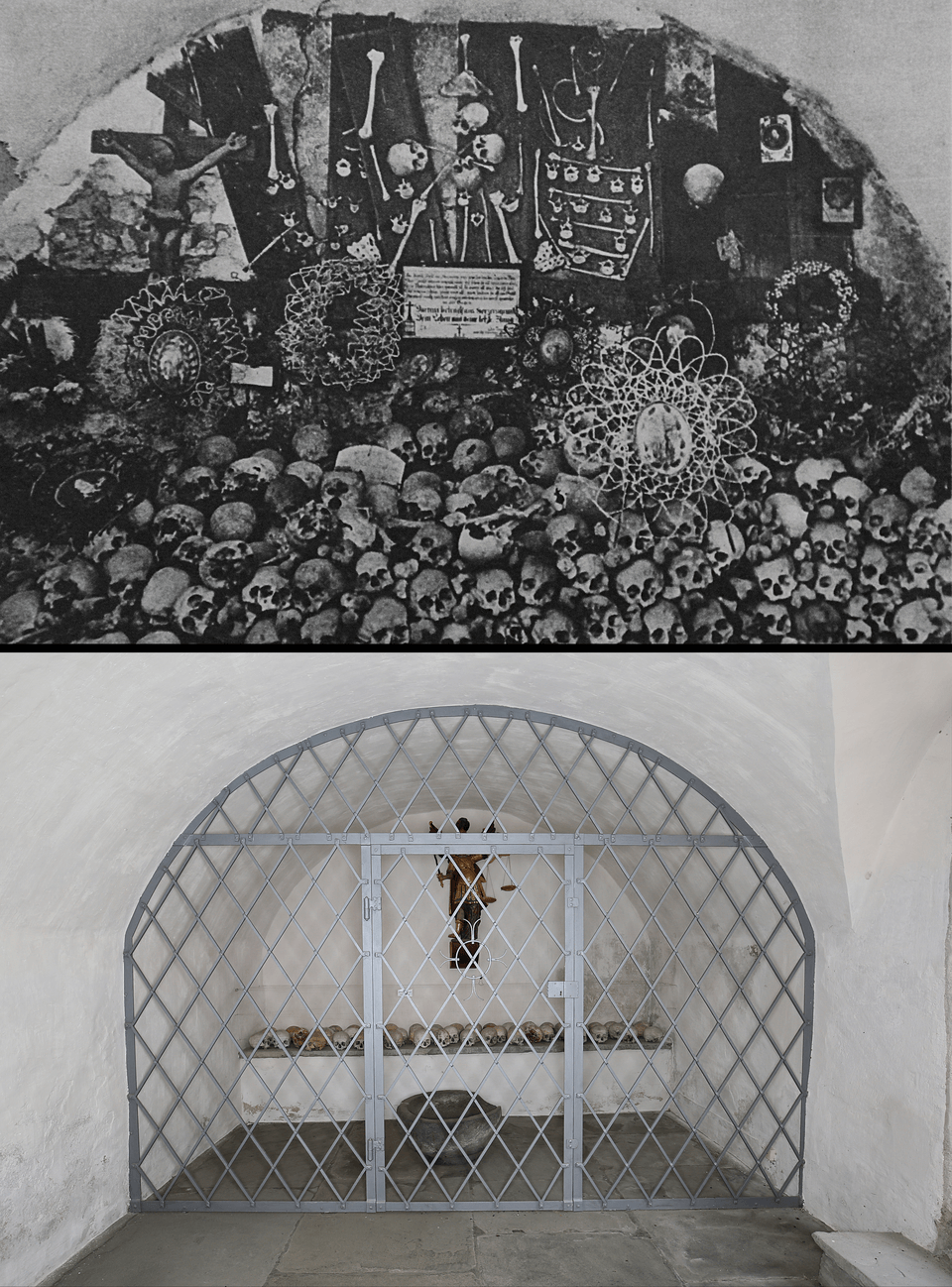Ossuaries Then and Now – a Comparison Over Time
Hallstatt
The famous ossuary of Hallstatt houses an impressive collection of painted and unpainted skulls. It is located in the “Michaelskapelle” right next to the roman catholic church. As it can be seen on the old postcard, the ossuary has been located in the very same place it still is today. You can see a cemetery lamp as well as a distinctive tombstone on both pictures above. Nowadays the entrance is hidden behind a small booth where the entrance fee must be paid. Two beautifully ornated doors allow the ossuary to be locked while it seems to have been accessible at all times back in the day.
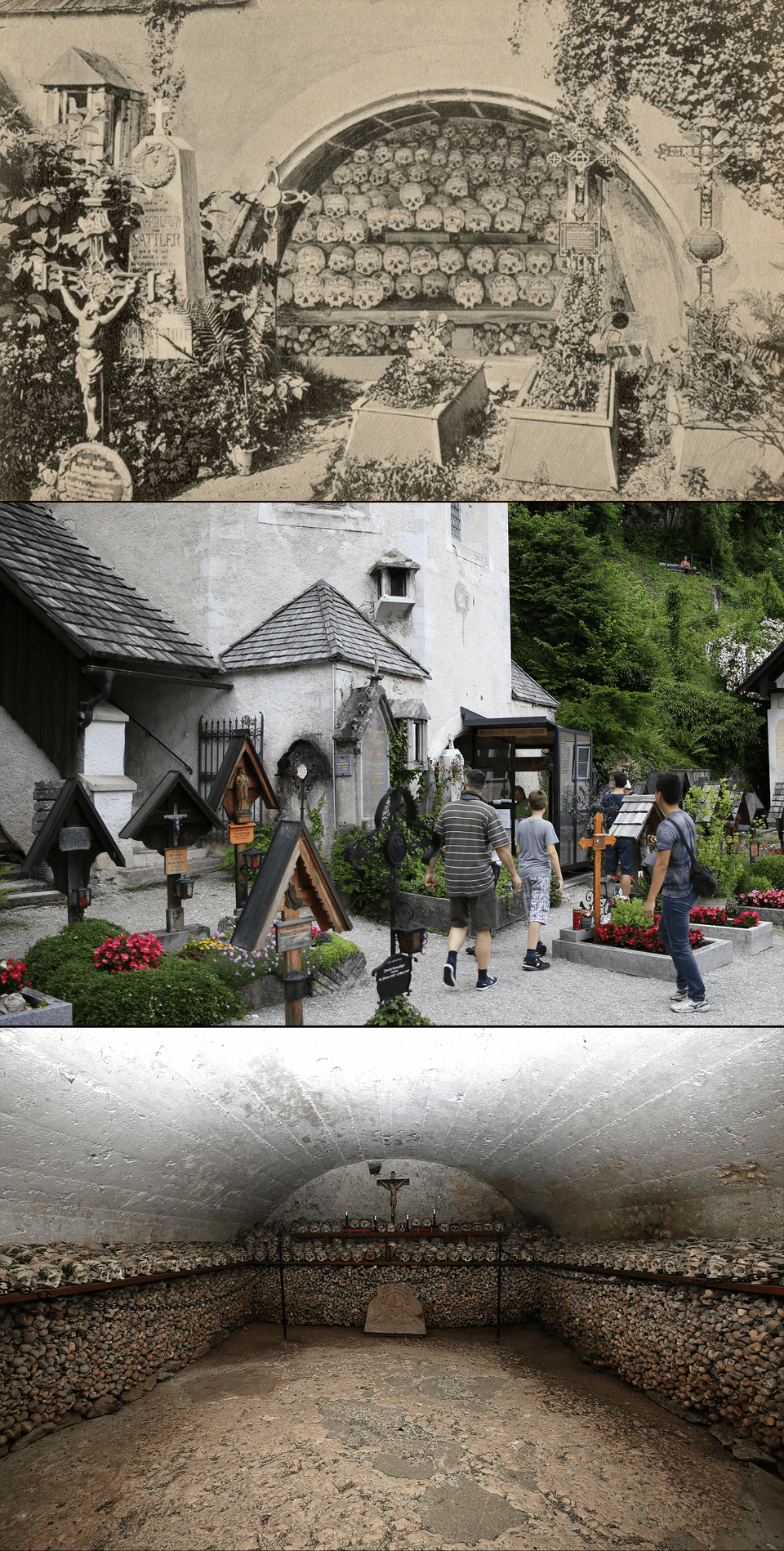
Wolfenschiessen
Wolfenschiessen doesn't quite look the same as in the 19th century. The pyramids and cross shape structure remind us of the ossuaries in Kutná Hora or Kolín. Nowadays the skulls are discretely placed in two niches of the back wall. One of the skulls particularly stands out as it is painted with the name of the deceased: “Marie Christen”.
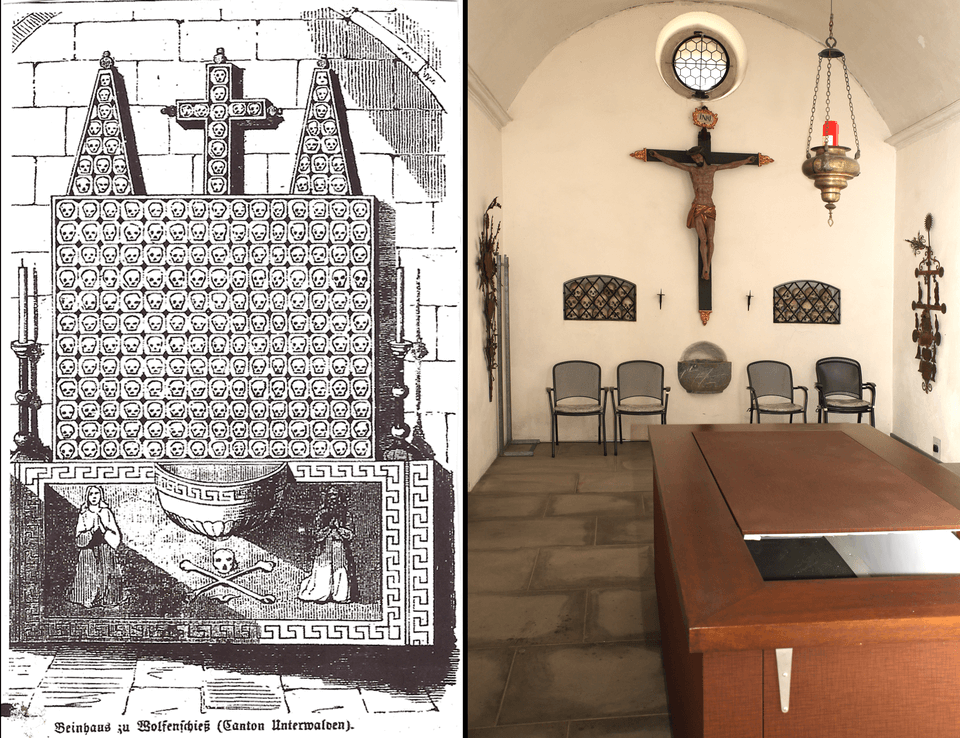
Stans
The ossuary of Stans has changed many times over the years. One constant, besides the skulls and bones, is an inconspicuous lamp made of stone providing its warm light for the dead. It can be seen on all four pictures and still remains there guarding the community until this day.
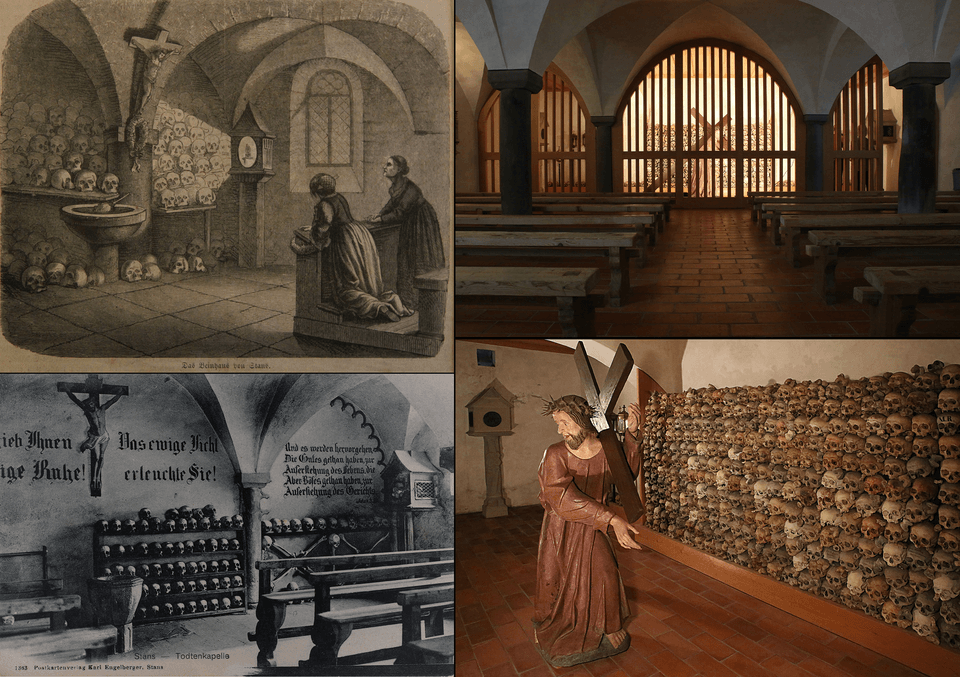
Brig-Glis
The ossuary of Brig-Glis is a small jewel hidden behind a grey curtain. Which view do you prefer?
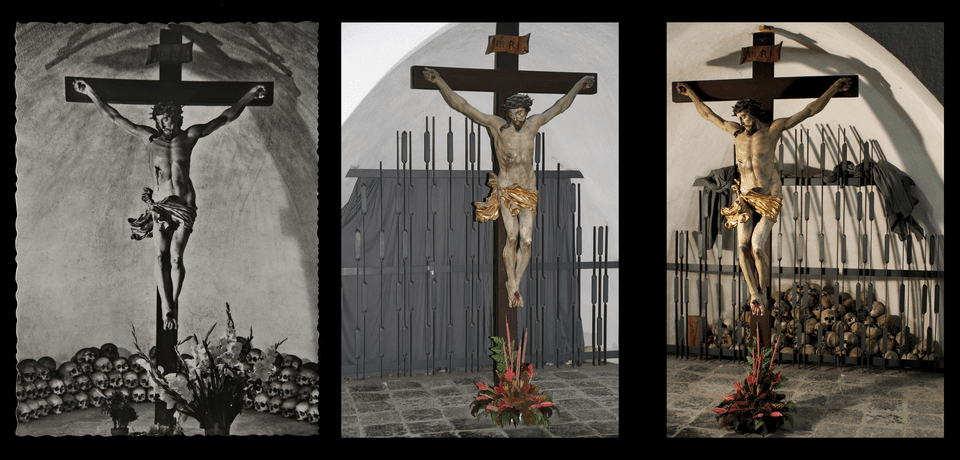
Lumbrein
The ossuary of Lumbrein was part of many stories. One of them tells about a lover that tried to impress his beloved by misusing skulls of the ossuary. Unfortunately his humour wasn’t shared by all participants as the poor girl ran for her life, leaving the lonely fellow behind in the ossuary.
The pictures above show the very same place in 2015, as well as how it used to be (probably before 1940). Below you can see the interior behind bars in 2013 and (as we suspect) in the 1920ies, fully integrated in a local tradition, attaching prayer threads to the skulls. Everytime someone prayed for a deceased a new knot was added to the thread in question.
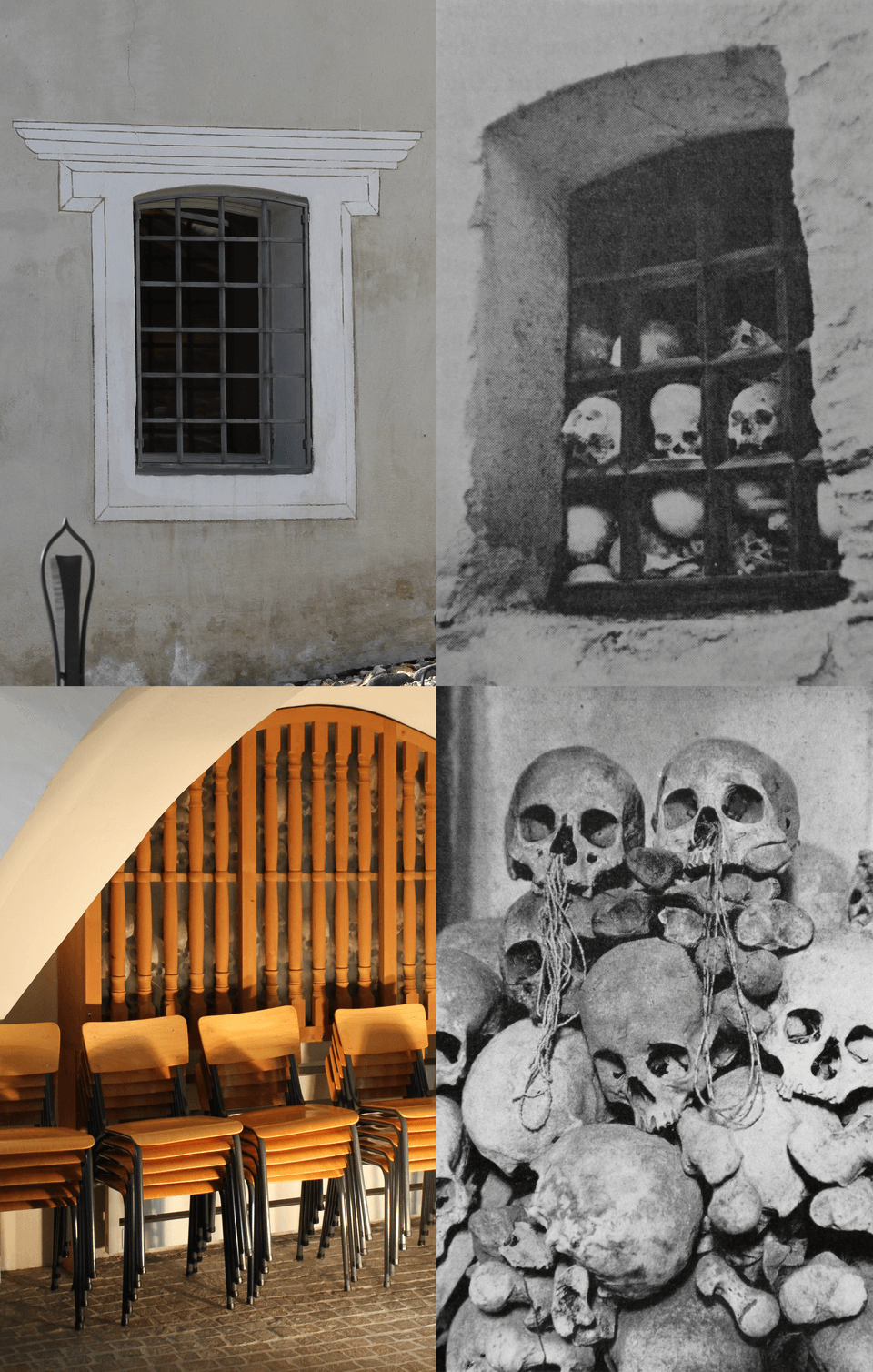
Naters
A good example which shows, that not everything has dramatically changed over the years can be found in Naters (Switzerland): On the picture above is the ossuary around the 1950ies. The picture below shows it in the year 2014 photographed from the same perspective.
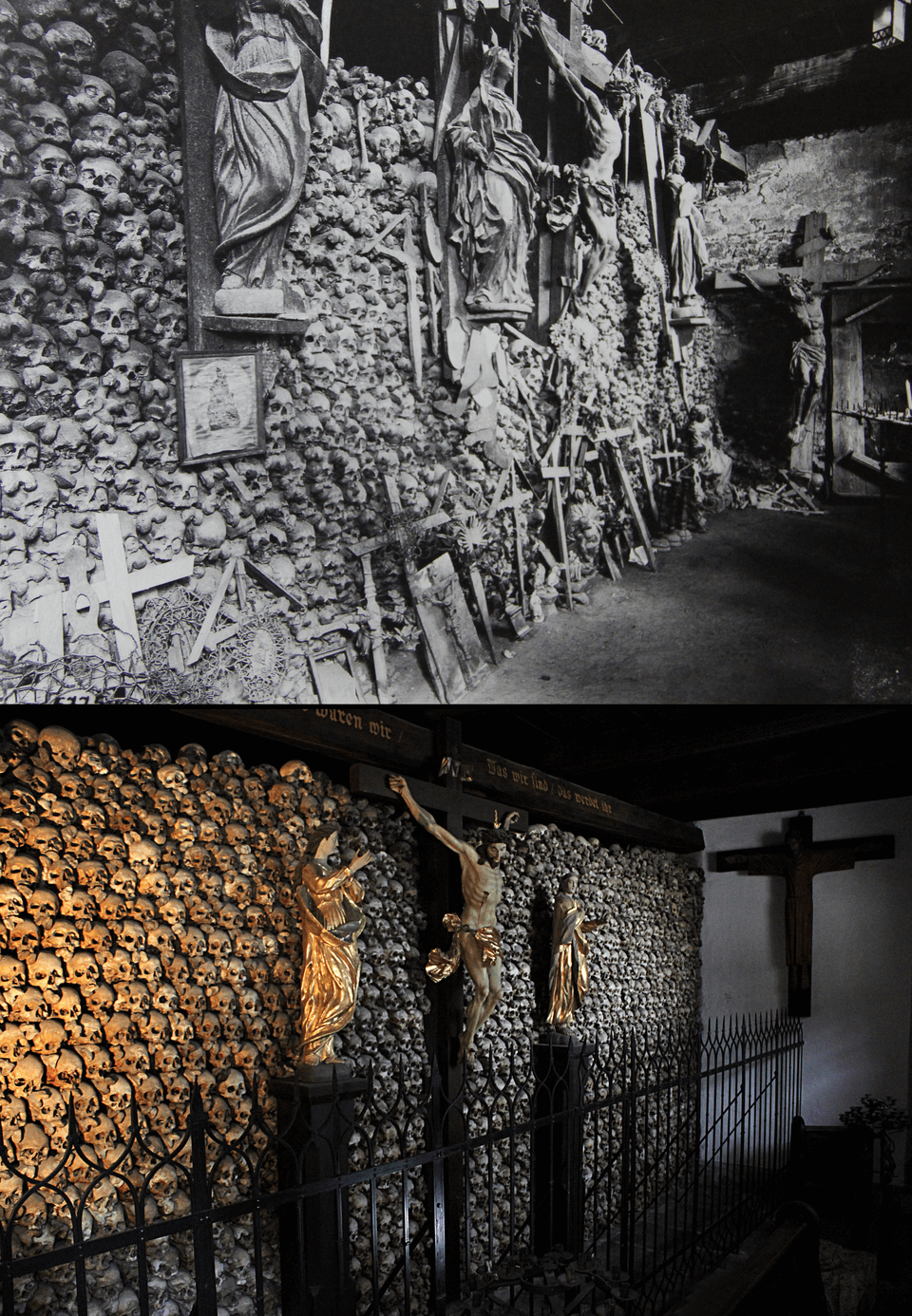
Domat/Ems
Some ossuaries have changed a lot during the years. We don't have many visual representations of how they were originaly. Some of the pictures we have found during our research reveal a glimpse of this past and allow a comparison with how they appear today:
Both pictures display the same ossuary of Domat/Ems (Switzerland), the one above in the 1940ies with beaded funeral wreaths and ornaments made of bones. The one below shows it in the year 2017 behind closed bars.
